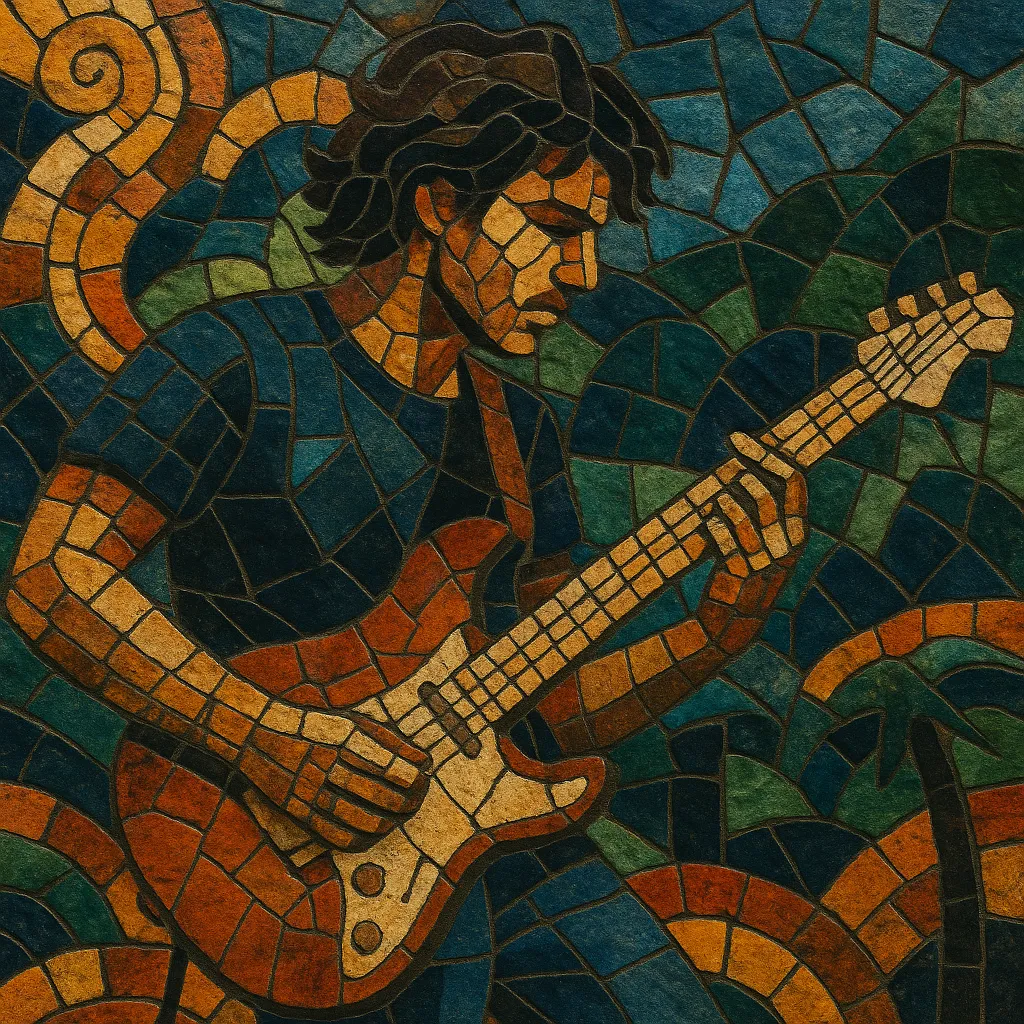Brazilian rock is the umbrella term for rock music created in Brazil, sung mostly in Portuguese, and colored by the country’s regional rhythms, harmonic language, and social context.
From its 1960s roots in rock and roll and Jovem Guarda, through the psychedelic and Tropicália experiments at the decade’s end, to the post-dictatorship explosion of 1980s “BRock,” the style has continually absorbed global rock currents while retaining a distinctly Brazilian identity. You’ll hear electric guitars alongside samba and baião grooves, bossa/MPB chords, and lyrics that move between youthful romance, biting social commentary, and poetic introspection.
Today, Brazilian rock spans classic, alternative, indie, and heavy strands, remaining a foundational pillar of Brazilian popular music.
Brazilian rock coalesced in the 1960s as Brazilian musicians adapted rock and roll and beat music to local tastes. The Jovem Guarda movement popularized a youth-oriented, guitar-driven sound, while Tropicália fused psychedelic rock with Brazilian popular music (MPB), bossa nova, Afro-Brazilian rhythms, and avant-garde ideas. Pioneers like Os Mutantes and Raul Seixas forged a playful and experimental path that broadened what “rock” could mean in Brazil.
Despite the constraints of the military dictatorship, the 1970s nurtured bold studio experimentation, theatricality, and countercultural attitudes. Artists mixed progressive, hard, and psychedelic rock with regional idioms. This era deepened the genre’s harmonic palette (borrowing from bossa and MPB) and rhythmic vocabulary (samba, baião, maracatu), setting a template for future hybrids.
With the political opening and mass media expansion, the 1980s saw an unprecedented boom. Bands like Legião Urbana, Titãs, Barão Vermelho, Os Paralamas do Sucesso, Capital Inicial, and Engenheiros do Hawaii brought post-punk, new wave, and pop-rock aesthetics to stadiums and TV. Lyrics balanced social critique and personal themes, becoming generational anthems and cementing rock as mainstream Brazilian culture.
The 1990s introduced grunge, alternative, and punk energies, while some groups blended reggae, ska, and Brazilian rhythms (e.g., Paralamas, Skank). Independent scenes flourished, and regional cross-pollination continued. In the 2000s, an indie resurgence leveraged the internet, connecting Brazilian rock to global DIY networks while maintaining local identity.
Contemporary Brazilian rock interacts with hip hop, electronic music, and funk carioca, but keeps its guitar core and lyrical focus. Legacy acts remain influential, and new artists continue to reinterpret the canon—proof that Brazilian rock’s strength lies in its openness to fusion and its commitment to songcraft and social voice.
Start with a classic rock setup: electric guitars (one rhythm, one lead), electric bass, drum kit, and a lead vocalist. Augment with keyboards or percussion (pandeiro, surdo) when you want a stronger Brazilian flavor.
Use straight rock backbeats, but weave in Brazilian feels: samba (syncopated kick and off-beat snare/hi-hat), baião (driving dotted rhythms), maracatu (heavy downbeats with layered accents), and reggae/ska off-beats for 80s/90s pop-rock flavors. Keep tempos between 90–150 BPM depending on substyle.
Blend rock power-chord riffs with MPB/bossa harmonies: add maj7, min7, 9ths, and chromatic approach chords. Melodies should be singable and hook-centric, but don’t fear modal color (Dorian/Mixolydian) or brief modulations. Vocal phrasing can be conversational and melodic, aligning with Portuguese prosody.
Write in Portuguese (most common) and balance personal storytelling with social observation. Themes often include youth, love, urban life, politics, and identity. Aim for poetic imagery, irony, and memorable choruses—the 1980s canon is a benchmark for lyrical impact.
Layer jangly or chorus/delay-clean guitars with occasional fuzz or overdrive for energy. For 80s-inspired tracks, use tight drums, gated reverbs, and keyboard pads; for Tropicália/psych flavors, experiment with tape effects, fuzz, and unusual instrumentation. Keep choruses anthemic and arrange dynamic builds (verse–pre–chorus–chorus–bridge–final chorus).


